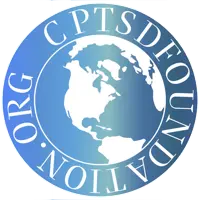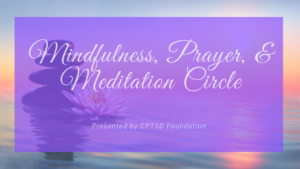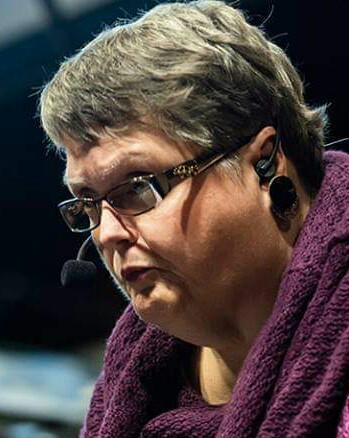This series in April has focused on childhood sexual abuse, what it is, and how it affects its victims long-term. Childhood sexual abuse (CSA) is an insidious blight on our world and destroys the future of our country, our children.
This article will focus on how to prevent childhood sexual abuse through education and to get involved.
Meet the Victims of CSA

The term child sexual abuse (CSA) means an event where a child’s physical or emotional self is violated through sexual actions ranging from showing a child pornographic material, indecent exposure, fondling, intercourse, lewd comments, or talking sexually to a child.
It is vital to understand that sexual abuse includes any sexual contact and does not always include penetration of the child or forcing a male child to perform sexually with an adult.
It is also crucial to keep in mind that CSA occurs when the victim is under 18, regardless of the age of the perpetrator or the relationship between them.
Children of all ages, even shortly after birth, can become victims of CSA.
Children are innocent and have little ability to escape a sexual predator, and the harm done to them will last a lifetime.
It is not just little girls who are abused as boys and girls are almost equally abused, leaving deep scars on both.
Meet the Perpetrators of CSA

Perpetrators of childhood sexual abuse are not who people believe them to be. You cannot look at a person and see by the way they dress, their mannerisms, or their sexual orientation that they are indeed sexual predators.
Sexual predators are neighbors, good friends, pastors, priests, rabbis, scout leaders of both sexes and all sizes. They are found in areas where they are in a leadership position but not always, and if you are not watching, can abuse your children right under your noses (Beauregard & Rossmo 2008).
A person who commits child sexual abuse refers to a person who sexually abuses minors but may or may not mean they are a pedophile as the two terms are not mutually exclusive.
The term pedophile is used to describe those who meet the clinical diagnosis by a mental health professional who is sixteen or older and has exclusive or non-exclusive sexual attraction to prepubescent children (kids under 13). The diagnostic criteria for pedophilia have long been under fire because the criterion for a pedophile is too narrow (American Psychological Association 2000).
Childhood sexual predators are male, female, heterosexual, homosexual, bisexual, are in a group or act alone, and from any ethnic background. They are also rich, poor, or middle class (Hall & Hall 2009).
Please, remember too that sometimes CSA is perpetrated by other children who act out either what they are experiencing or because it can feel good. The children are still innocent, but knowing this bit of information may make you more aware when your child exhibits signs of sexual assault.
Although the motives of child sexual predators are different, child sexual abusers do share some personal characteristics, which are included below.
- Poor social skills
- Strained relationships with other adults
- Emotional attachment problems
- Sexual problems
- Low self-esteem
- Devalues themselves
- Loneliness
- Feelings of powerless
- Feelings of humiliation
While the above characteristics cover some of those of child sexual predators, they do not cover all, and not everyone who has these characteristics is a perpetrator of sexual violence against children.
We Must Take Responsibility for Our Children
Preventing child sexual abuse requires that all adults take responsibility for the children around them, including the children of others, whether they are related or not. Adults are responsible for ensuring that children are safe and have a stable and nurturing relationship with adequate housing and care.
Unfortunately for all of us, resources to prevent child sexual abuse are used to treat children who are already victims and on the criminal cases of their abusers, leaving little resources to prevent the abuse in the first place. Larger allocations of money and other resources are needed to combat child abuse by focusing on prevention, but society needs to become aware of the problem first.
Historically, society has hidden its head in the sand when it comes to preventing and treating child sexual abuse. We have lived in denial for so long that getting people to release the grip they have on their pocketbooks and hearts is hard-earned.
In the meantime, our children continue to suffer in silence.
There are several things that we adults can do to help children:
Educate Yourself. Read, listen, and watch videos about CSA. Learn all you can about it and learn how you can help.
Speak up. Bringing childhood sexual abuse out of the hush-hush shadows will help push it into the light where it can be seen and treated. If we learn to recognize early that a child is in trouble, we can stop or prevent sexual abuse from happening.
Contact Your State and Federal Legislators. Tell them through letters, phone calls, and testimonies that childhood sexual abuse is a problem they must not ignore. Advocate for more money and resources to be allocated to prevent and treat CSA.
Open Your Pocketbook. Be cautious but generous to open your purse to share your money supporting research, shelters, and other vital resources.
Teach Your Kids To Tell
The best time to treat childhood sexual abuse is before it happens, and while we don’t want children to be terrified of the world, we need them to be cautious. Children are easy marks for adult perpetrators because they see adults, and rightly so, as authority figures. Sometimes kids are made to feel special and receive special treatment in exchange for sexual assault.
The first line of defense in preventing childhood sexual abuse is to teach our children to talk. Silence is the childhood perpetrator’s best friend, so if we can keep the lines of communication open between our children and ourselves, it is less likely that a sexual predator will be able to abuse our kids.
Second, we must learn the typical behaviors of our children and remain vigilant for changes outside the normal scope. For instance, if a normally outgoing child suddenly becomes sullen and withdrawn, it might be a sign that they are sexually abused.
If God forbid, your suspicions are proven to be correct, act swiftly and decisively.
First, alert the authorities and then turn all your attention to your child. Remain calm because your child will look to you for clues that they will be okay. Always believe what your child is telling you and begin to restore their sense of safety. Help your child understand that the person who harmed them has done something wrong and help them to see that they did nothing wrong.
A child who discloses sexual abuse has had their world turned upside down, and they will likely believe they are responsible for what happened to them. Reassure the child that they are not to blame for causing it, nor are they responsible for not making it stop. Tell them how proud you are of them for telling you. Seek out counseling for your child after sexual abuse because the most common responses to it are arduous to overcome.
Teach Your Child Skills to Prevent CSA

There are skills that you as a parent can teach your children so that they will not become CSA victims. While there are many such skills, I will outline five below.
- Teach your child that their body is theirs and that boundaries surround them that no one should cross. Teach them that no one should ask to be touched on their private body parts, and no one should touch theirs.
- Perpetrators often use manipulation to keep their victims coming back for more. Teach your children not to keep secrets from you no matter who told them to do so or how they are threatened.
- Teach your child how to get away from uncomfortable situations with a perpetrator. Teach them it is okay to say no if they feel what is happening is wrong and give them the words they need. Also, give your child advice on leaving a scary situation such as telling their would-be perpetrator that they can’t stay because they must leave to go home immediately or tell the abuser that they need to go to the potty. The first scenario allows the child to get away right away, but if they feel trapped, the second gives them a chance to hide in the bathroom with the door locked.
- Establish a code word they can use if they feel uncomfortable in a situation such as a sleepover or a scout camp out.
- Tell your child they will never be in trouble for telling if something happens. This is vital because perpetrators will tell their victims that the child has done something wrong, and their parents will be angry. Reaffirm that if they tell you when something terrible happens, they will never get in trouble.
By being honest with our children about sexual abuse without terrifying them, we can prevent them from becoming victims and save them from a lifetime of problems.
Present and Future Developments Will Help
The Centers for Disease Control (CDC) is very involved in the prevention of childhood sexual abuse. One way they have done so to identify gaps in research needed to increase the understanding of CSA and its causes.
These gaps include the following:
- Improve surveillance systems and data collection for keeping track of child sexual abuse
- We need to strengthen existing and develop new evidence-based programs, policies, and practices
- Increase our understanding of risk and protective factors for the perpetration of CSA and victimization
Childhood sexual abuse needs to be treated as a national public health crisis and receive the same and better recognition as cigarette smoking, a well-known campaign for prevention. Children are our future, and until CSA is treated as a plague, like COVID 19, and receives the attention, it deserves our children will continue to suffer, and we, as a society, will continue to weaken.
“One person of integrity can make a difference.” ~ Elie Wiesel
“If there is anything that we wish to change in the child, we should first examine it and see whether it is not something that could better be changed in ourselves.” ~ Carl Jung
Resources
Below are listed a few of the resources you can find on the childwelfare.gov website. Please check out this link for more information.
RAINN National Sexual Assault Hotline: Available 24/7 for support.
Call: 800-656-4673
Chat: online.RAINN.org
Child Molestation Research & Prevention Institute
1151 Harbor Bay Parkway
Suite 121
Alameda, California 94502
Phone: (510) 740-1410
Email: [email protected]
https://childmolestationprevention.org/(opens in new window)
https://childmolestationprevention.org/contact-us/
The Child Molestation, Research & Prevention Institute, is a national science-based nonprofit organization dedicated to preventing child sexual abuse through research, education, and family support. Its focus is on providing information to professionals and families about the early warning signs of a problem and the availability of early diagnosis and effective treatment.
Child Welfare Information Gateway
Children’s Bureau/ACYF
330 C Street, S.W
Washington, District of Columbia 20201
Toll-Free: (800) 394-3366
Email: [email protected]
Child Welfare Information Gateway connects professionals and the general public to information and resources targeted to children and families’ safety, permanency, and well-being.
The CDC has developed technical packages to help communities utilize the best available to prevent sexual violence.
CDC Technical Packages to Prevent Violence
References
American Psychiatric Association (2000). Diagnostic and Statistical Manual of Mental Disorders (4th ed., text revision). Washington, DC: American Psychiatric Association.
Beauregard, E. and Rossmo, K. (2008). Geographic profiling and analysis of the hunting process used by serial sex offenders. In M. St-Yves and M. Tanguay, eds., The Psychology of Criminal Investigations: The Search for the Truth (pp. 529-554). Toronto: Carswell.
Centers for Disease Control. Stop SV: A Technical Package to Prevent Sexual Violence. Retrieved from: https://www.cdc.gov/violenceprevention/pdf/SV-Prevention-Technical-Package.pdf
Hall, R.C.W. and Hall, R.C.W. (2009). A profile of pedophilia: Definition, characteristics of offenders, recidivism, treatment outcomes, and forensic issues. Focus: The Journal of Lifelong Learning in Psychiatry, 7(4): 522-537.


If you or a loved one live in the despair and isolation that comes with complex post-traumatic stress disorder, please, come to us for help. CPTSD Foundation offers a wide range of services, including:
- Daily Calls
- The Healing Book Club
- Support Groups
- Our Blog
- The Trauma-Informed Newsletter
- Daily Encouragement Texts
All our services are reasonably priced, and some are even free. So, to gain more insight into how complex post-traumatic stress disorder is altering your life and how you can overcome it, sign-up; we will be glad to help you. If you cannot afford to pay, go to www.cptsdfoundation.org/scholarship to apply for aid. We only wish to serve you.

My name is Shirley Davis and I am a freelance writer with over 40-years- experience writing short stories and poetry. Living as I do among the corn and bean fields of Illinois (USA), working from home using the Internet has become the best way to communicate with the world. My interests are wide and varied. I love any kind of science and read several research papers per week to satisfy my curiosity. I have earned an Associate Degree in Psychology and enjoy writing books on the subjects that most interest me.




It’s known that trauma from unhindered toxic abuse, sexual or otherwise, usually results in a helpless child’s brain improperly developing. If allowed to continue for a prolonged period, it can act as a starting point into a life in which the brain uncontrollably releases potentially damaging levels of inflammation-promoting stress hormones and chemicals, even in non-stressful daily routines. I consider it to be a form of brain damage.
The lasting emotional/psychological pain from such trauma is very formidable yet invisibly confined to inside one’s head. It is solitarily suffered, unlike an openly visible physical disability or condition, which tends to elicit sympathy/empathy from others. It can make every day a mental ordeal, unless the turmoil is treated with some form of medicating, either prescribed or illicit.
Sadly, due to the common OIIIMOBY mindset (Only If It’s In My Own Back Yard), the prevailing collective attitude, however implicit or subconscious, basically follows: ‘Why should I care — I’m soundly raising my kid?’ or ‘What’s in it for me, the taxpayer, if I support child development programs for the sake of others’ bad parenting?’ While some may justify it as a normal thus moral human evolutionary function, the self-serving OIIIMOBY can debilitate social progress, even when social progress is most needed; and it seems that distinct form of societal penny wisdom but pound foolishness is a very unfortunate human characteristic that’s likely with us to stay.
The wellbeing of ALL children — and not just what other parents’ children might/will cost us as future criminals or costly cases of government care, etcetera — needs to be of real importance to us all, regardless of whether we’re doing a great job with our own developing children. A mentally sound future should be every child’s fundamental right — along with air, water, food and shelter — especially considering the very troubled world into which they never asked to enter.
_________
“It has been said that if child abuse and neglect were to disappear today, the Diagnostic and Statistical Manual would shrink to the size of a pamphlet in two generations, and the prisons would empty. Or, as Bernie Siegel, MD, puts it, quite simply, after half a century of practicing medicine, ‘I have become convinced that our number-one public health problem is our childhood’.” (Childhood Disrupted, pg.228).
I am a therapist at a Children’s Advocacy Center and have been dedicated to CSA efforts for over 15 years. I have written a children’s book to help support parents trying to prevent sexual abuse. The book is Who’s The Boss Of This Body? and it is available in English and Spanish
https://www.amazon.com/Whos-Boss-Meghan-Hurley-Backofen/dp/1093530804
“Quien Es El Jefe De Este Cuerpo”
https://www.amazon.com/%C2%BFQui%C3%A9n-Es-Jefe-Cuerpo-Spanish/dp/B085HM8BFD
I also have a podcast for parent education on how to prevent child sexual abuse.
To listen to the podcast on itunes search “10 Tips for Sexual Abuse Prevention”. Each tip is its own link so there are 10 episodes.
https://podcasts.apple.com/us/podcast/10-tips-for-sexual-abuse-prevention/id1490069280
or stream on our CAC’s website at
https://www.riverbridgerc.org/podcasts/